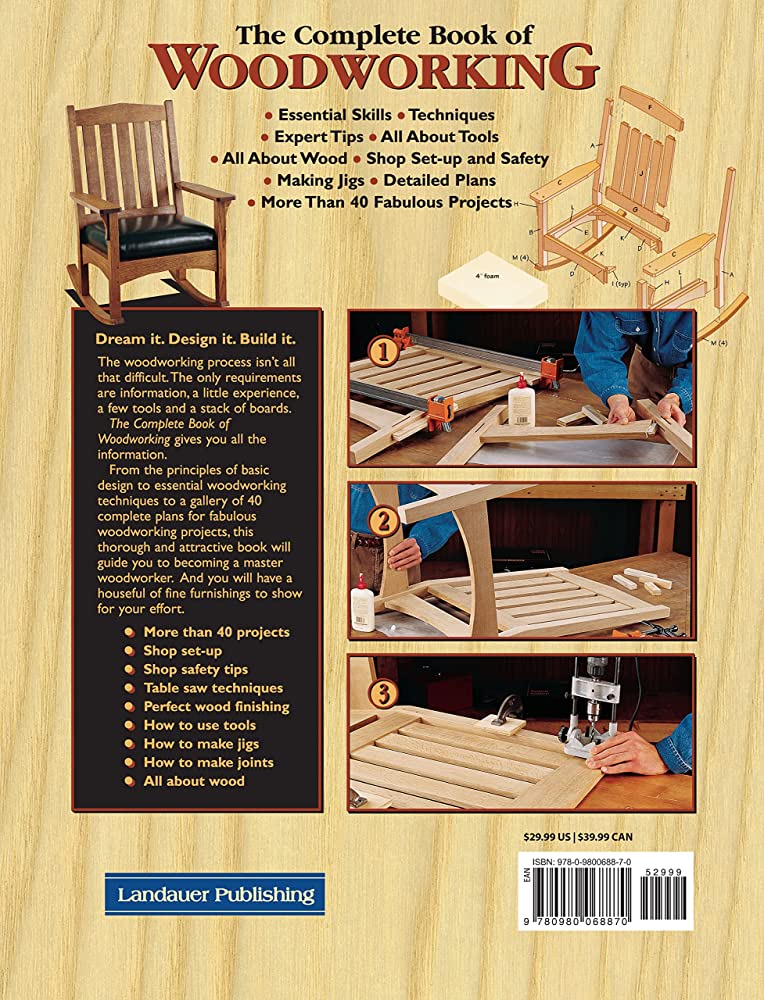Woodworking plans are detailed instructions for creating wooden objects. They provide dimensions, diagrams, and material lists needed for the project.
Woodworking is a long-standing tradition that has provided humans with useful objects throughout history. With the rise of diy culture, woodworking has become a popular pastime and hobby for many. However, before beginning a woodworking project, it’s crucial to have a plan in place.
Woodworking plans provide a detailed roadmap for creating a specific object, whether it’s a table, chair, or bookshelf. These plans take into account the necessary dimensions, tools, and materials needed for the project, and are essential for ensuring a successful build. In this article, we’ll explore the ins and outs of woodworking plans and provide tips for finding the perfect plan for your next project.

Credit: www.woodsmithplans.com
Understanding The Basics Of Woodworking Plans
Woodworking plans are the set of instructions that guide woodworkers in creating a final product. These plans contain detailed information about the dimensions, types of materials needed, and tools required. Woodworking plans help the craftsmen visualize the end product, make modifications before starting the project, and avoid potential mistakes.
Every project has a different woodworking plan and it is important to choose the appropriate one based on skill level and desired outcome. Knowing how to read a woodworking plan is crucial in ensuring a successful project. It is important to consider factors such as the grain patterns and different types of wood when selecting a plan.
Woodworking plans provide a structure to follow while still allowing creative freedom. Ultimately, woodworking plans assist woodworkers in bringing their vision to life.
Different Types Of Woodworking Plans
Woodworking enthusiasts know that plans are crucial for every project. Detailed plans, sketches plans, and schematics plans are the three types of woodworking plans. Detailed plans come with written instructions and 3d images, sketches plans involve hand-drawn sketches and measurements, while schematics plans are made with specialized software.
Each type of plan has its own advantages, depending on the woodworker’s level of expertise and tool availability. For beginners, detailed plans are recommended, while intermediate woodworkers can make the most of sketches plans. Schematics plans are ideal for those with access to specialized software.
Regardless of the type, accurate and complete plans are the key to executing successful woodworking projects.
Factors To Consider When Choosing Woodworking Plans
When it comes to woodworking, having the right woodworking plans is crucial. To ensure a successful project, there are several factors to consider when choosing woodworking plans. First, consider your skill level and choose plans that match your abilities. Next, assess the resources you have available, including tools, materials and workspace.
The size of your project also affects the plans you choose; ensure that the plans are appropriate for the scale of your project. Finally, consider the timeframe you have available for the project; pick plans that can be completed within your designated timeline.
By taking these factors into account when selecting your woodworking plans, you can set yourself up for success and ensure a satisfying finished product.
Tips For Creating Effective Woodworking Plans
Creating effective woodworking plans is crucial for successfully completing any project. One important aspect is identifying all necessary materials beforehand. Precisely measuring every component is also essential to ensure accurate cuts and assembly. Don’t forget to provide detailed dimensions for each part of the project.
And finally, step-by-step instructions should be included for each section of the plan. By following these guidelines, you can be sure that your woodworking plans will be clear and easy to follow, enabling you to create beautiful, functional works of art.
Using Woodworking Plans Effectively
Woodworking plans are an excellent resource for anyone who enjoys woodworking. Understanding plan symbols and abbreviations is essential to use them effectively. Another crucial aspect is the importance of following safety precautions. Using appropriate tools is vital when working with woodworking plans.
Lastly, making necessary adjustments to the plans will enable you to customize your projects. By adhering to these guidelines, you can confidently use woodworking plans and create impressive finished products.
Frequently Asked Questions Of All About Woodworking Plans
What Are Woodworking Plans?
Woodworking plans are detailed instructions with drawings and measurements that guide woodworkers on how to construct various items from wood.
Where Can I Find Woodworking Plans?
You can find woodworking plans online, in woodworking magazines, in books, and even in some hardware stores.
What Skill Level Do I Need To Use Woodworking Plans?
Woodworking plans cater to different skill levels, from beginners to experts, so you can find plans that suit your skill level.
Are Woodworking Plans Free?
Some woodworking plans are free, but most high-quality plans come with a cost. The cost varies depending on the plan’s complexity.
Can I Modify Woodworking Plans?
You can modify woodworking plans to fit your unique needs and creativity. However, ensure that the changes you make do not compromise the item’s functionality.
How Important Are Woodworking Plans?
Woodworking plans are crucial in guiding woodworkers on how to create a particular item efficiently and effectively. They also help in reducing material waste.
Conclusion
By now, you should have a pretty good idea of what woodworking plans are and how they can benefit you. With a seemingly endless amount of projects to choose from, woodworking can be a fulfilling and enjoyable hobby. Taking the time to plan out your projects can save you time and money in the long run, and increase the likelihood of a successful outcome.
Whether you are a seasoned woodworker or just getting started, utilizing quality woodworking plans can help take your skills to the next level. Remember to choose plans that are appropriate for your skill level and equipment, and don’t be afraid to adapt or modify plans to suit your needs.
With a little creativity and practice, your woodworking skills will flourish and you’ll be crafting beautiful and functional pieces in no time.
